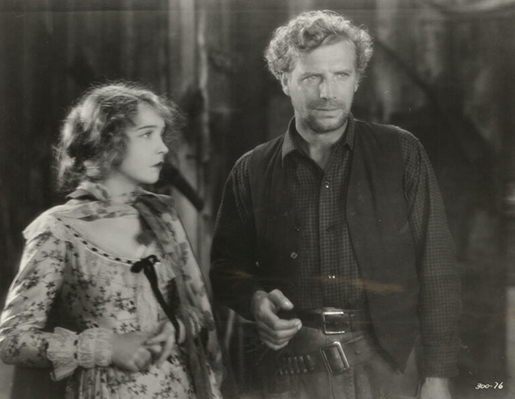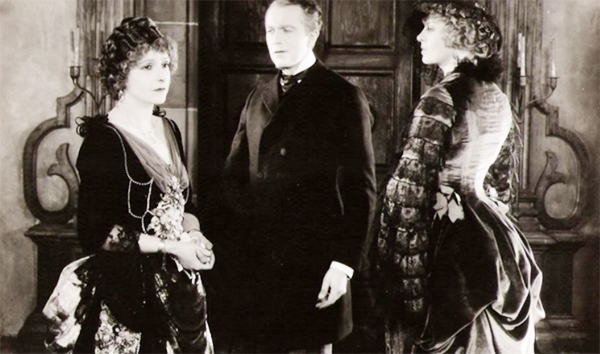MoMA 무성영화 주간(Silent Movie Week, 7/31-8/6)
Silent Movie Week 2024
Jul 31–Aug 6, 2024
Museum of Modern Art
As a commercial medium, silent film lasted for only about 30 years, but those 30 years represented a creative explosion with few parallels in the art world. It’s estimated that only 20 percent of the films made between 1895 and 1930 survive, and yet the work of preserving and restoring the remaining films continues. MoMA is one of several archives around the world with significant silent film holdings, and this annual series is an attempt to catch up with some of the recent restoration work done by MoMA and colleagues around the world.
Each year, Silent Movie Week brings seven restorations to MoMA over the course of seven consecutive evenings. This year’s program opens on July 31 with our recent digital restoration of Victor Sjostrom’s The Wind (1928), presented in the Abby Aldrich Rockefeller Sculpture Garden (weather permitting).
Organized by Dave Kehr, Curator, Department of Film.

The Wind. 1928. Directed by Victor Sjöström
Wed, Jul 31, 7:30 p.m.
The Wind. 1928. USA. Directed by Victor Sjöström. Screenplay by Frances Marion. With Lillian Gish, Lars Hason, Montagu Love, Dorothy Cumming. Preserved and digitally restored by The Museum of Modern Art. With the original 1928 music and effects soundtrack. New York restoration premiere. 95 min.
From his first, pioneering work in Sweden, Victor Sjöström was concerned with the intersection of landscape and psychology, with the way the natural world both shaped the substance of his characters’ thoughts and feelings, and reflected those thoughts and feelings in its metaphoric grandeur. The ocean of Ingeborg Holm (1913) suggests both the depths and the tumult of its main character’s descent into madness; the mountains of The Outlaw and His Wife (1918) embody both the spiritual, transcendent plan of the central couple’s love for each other, as well as the brute physicality of the social constraints that his lovers will never quite escape.
Sjöström largely left his interest in landscape behind in Sweden when he came to America in 1923, with the spectacular and singular exception of The Wind. The setting is the desert of western Texas, a land of high temperatures, low rainfall, and no shade, into which a frail young woman from the east (Lillian Gish, in one of the great performances of silent film) has been thrust against her will, totally unprepared for the desolation—physical, social, psychological—that awaits her. The assault is total and unrelenting, like the raw wind that never ceases to blow across the lunar landscape. (The exteriors were shot, under difficult conditions, in the Mojave Desert of southern California.)
Just as the ghostly vehicle of The Phantom Carriage, Sjöström’s Swedish masterpiece of 1921, becomes the image of death, so does Sjöström place a symbol in the desert sky: a wild horse that becomes the face of the wind, irrational and unstoppable, and also of the emotional pressures growing on Gish’s Letty, driving her relentlessly toward a once-unthinkable act.
MoMA’s digital restoration is based on two 35-millimeter prints acquired from M-G-M in the 1930s. Although the film was shot silent, it was released with a synchronized score and sound effects with a frame rate of 24 fps, which this restoration respects.
#A Girl in Every Port. 1928. Directed by Howard Hawks
With piano accompaniment from Ben Model
Thu, Aug 1, 7:00 p.m.
A Girl in Every Port. 1928. USA. Directed by Howard Hawks. Screenplay by Hawks, James Kevin McGuiness, Seton I. Miller, Sidney Lanfield, Reggie Morris, Malcolm Stuart Boyland. With Victor McLaglaen, Louise Brooks, Robert Amrstrong, Maria Albra, Leila Hyams, Eileen Sedgwick, Natalie Kingston, Myrna Loy. 35mm print from the collection of the George Eastman Museum. 78 min.
The first of Howard Hawks’s “love stories between two men,” this boisterous buddy comedy stars Victor McLaglan (fresh from Walsh’s What Price Glory) and Robert Armstrong (of future King Kong fame) as a pair of sailors who travel the world, competing for the attentions of an entire United Nations of attractive ladies (quite a collection of silent beauties, including Maria Alba, Leila Hyams, Natalie Joyce, Sally Rand, Eileen Sedgwick, and Myrna Loy, in her “oriental” period). But the prime mover is Louise Brooks, in her best American film and as the first of many feisty, independent Hawksian women. As the high diver Mam’selle Godiva, she conquers both of our heroes “like Grant took Richmond,” in the words of a contemporary reviewer. For a generation of French critics, Hawks’s film was the first to break with Weimar shadow aesthetics and present something new, hard, and streamlined—in the words of novelist Blaise Cendrars, “the first appearance of contemporary cinema.” Presented in a 35mm archival print from the George Eastman Museum.

#Secrets. 1924. Directed by Frank Borzage
With piano accompaniment from Makia Matsumura
Fri, Aug 2, 7:00 p.m.
Secrets. 1924. USA. Directed by Frank Borzage. Screenplay by Rudolph Besier, May Eddington, Frances Marion. With Norma Talmadge, Eugene O’Brien, Claire McDowell. Digital restoration courtesy Cineteca di Bologna. New York restoration premiere. 108 min.
Following the triumphant return of Frank Borzage’s The Lady in last summer’s Silent Movie Week, here is his first film with Norma Talmadge, a historical romance told in flashbacks. The elderly Mary Carlton (Talmadge) looks back over 40 years of life on the Wyoming plains as her unfaithful husband (Eugene O’Brien) lies dying. Talmadge shines under Borzage’s direction as she moves through the shifting decades and evolving make-ups—so much so that her main box office rival, Mary Pickford, commissioned Borzage to remake the film for her as one of Pickford’s first talkies. The 1924 version is vastly superior, one of Borzage’s most beautiful statements of his eternal theme, the redemptive power of romantic love.
#Dancing Mothers. 1926. Directed by Herbert Brenon
The Pill Pounder. 1923. Directed by Gregory la Cava
With piano accompaniment from Donald Sosin
Sat, Aug 3, 7:00 p.m.
Dancing Mothers. 1926. USA. Directed by Herbert Brenon. Screenplay by Edmund Goulding, Forrest Halsey, Edgar Selwyn. With Conway Tearle, Alice Joyce, Clara Bow. Digital restoration courtesy San Francisco Silent Film Festival. New York restoration premiere. 64 min.
Clara Bow was on the brink of stardom when she replaced Betty Bronson as the “juvenile lead” in Dancing Mothers, a generational melodrama directed by Herbert Brenon from a script largely by Edmund Goulding. The spoiled daughter of a womanizing financier (Norman Trevor) and a former Broadway star (Alice Joyce), Clara is drifting into an affair with a notorious society womanizer (Conway Tearle). Hoping to rescue her daughter, Joyce transforms herself into a mystery woman and sets out to seduce Tearle, only to fall for him herself. This new restoration from the San Francisco Silent Film Festival is based on a pair of 16mm prints.
The Pill Pounder. 1923. USA. Directed by Gregory la Cava. With Charles Murray, Clara Bow. Digital restoration courtesy San Francisco Silent Film Festival. 14 min. New York restoration premiere. 14 min.
Film collector Gary Higgins made headlines when a short film he purchased for $20 in an Omaha bankruptcy sale turned out to be the only surviving element from The Pill Pounder, a forgotten 1923 short that contained an early comedy turn by Clara Bow. Restored under the patronage of Bow biographer David Stenn, the film reveals the untrained Bow as an immediately magnetic screen presence.
#Pêcheur d’Islande (Island Fishermen). 1924. Directed by Jacques de Baroncelli
With piano accompaniment by Makia Matsumura
Sun, Aug 4, 4:00 p.m.
Pêcheur d’Islande (Island Fishermen). 1924. France. Directed by Jacques de Baroncelli. Screenplay by de Baroncelli, Pierre Loti. With Sanda Milovanoff, Charles Vanel, Thomy Bourdelle. Digital restoration courtesy Film Preservation Associates/Blackhawk Films. New York restoration premiere. 93 min.
Pierre Loti’s 1886 novel was filmed several times, but never as hauntingly as this 1924 French silent feature directed by Jacques de Baroncelli. The Iceland fishermen are the flinty Bretons who depart every summer for months of cod fishing in the subarctic waters of the North Atlantic; a supernatural encounter leaves one of their number, Yann (Carles Vanel), so deeply affected that he can no longer accept the conventional domestic life proposed by his sweetheart (Sandra Milovanoff): he has fallen in love with death. Baronicelli’s direction blends ethnographic realism with a misty abstraction in the best tradition of French poetic realism.
#The Gorilla. 1927. Directed by Alfred Santell
With piano accompaniment by Ben Model
Mon, Aug 5, 7:00 p.m.
The Gorilla. 1927. USA. Directed by Alfred Santell. Screenplay by Al Boasberg, Alfred A. Cohn, Sidney Lazarus, Harry McArthur, Ralph Spence. With Charles Murray, Fred Kelsey, Walter Pidgeon, Claude Gillingwater, Tully Marshall. Digital restoration courtesy Cineteca di Milano. New York restoration premiere. 80 min.
Long thought lost but recently rediscovered in the collection of the Cineteca di Milano, The Gorilla is one of many Old Dark House comedy thrillers that flourished in the 1920s, though this one is distinguished by the robust mise-en-scène of director Alfred Santell (That Brennan Girl), here working with an uncredited production designer to create some spectacular gothic imagery. Santell’s camera prowls the inventive, multistory sets as the inevitable pair of dumb detectives (this time, Charlie Murray and Fred Kelsey) try to solve a series of killings apparently committed by the escaped primate of the title.
#The Informer. 1929. Directed by Arthur Robison
Piano accompaniment from Donald Sosin
Tue, Aug 6, 7:00 p.m.
The Informer. 1929. UK. Directed by Arthur Robison. Screenplay by Benn W. Levy, from the novel by Liam O’Flaherty. With Lya De Putti, Lars Hanson, Ellen Pollock. Digital restoration courtesy British Film Institute. New York restoration premiere. 83 min.
John Ford’s 1935 adaptation of the Liam O’Flaherty story is a justly celebrated classic, but this earlier, silent adaptation from 1929—a British-German co-production directed in high Weimar style by Arthur Robison (Warning Shadows)—deserves its own place in film history. The Swedish star Lars Hanson plays O’Flaherty’s tortured protagonist, an IRA partisan who has betrayed his best friend to the authorities, as a man stalked by fate, dodging through a labyrinth of night exteriors constructed on a soundstage at Elstree that might as well have been UFA’s Babelsberg studios in Berlin. It’s a remarkable example of the international culture that silent movies created—Hanson’s costar is the Hungarian Lya De Putti—in the years just before the form disappeared.




 '반 고흐와 자연의 종말(Van Gogh and the End of Nature)' 출간
'반 고흐와 자연의 종말(Van Gogh and the End of Nature)' 출간
 소냐 클락 회고전 'Sonya Clark: WE ARE EACH OTHER'(3/23-9/22)
소냐 클락 회고전 'Sonya Clark: WE ARE EACH OTHER'(3/23-9/22)

